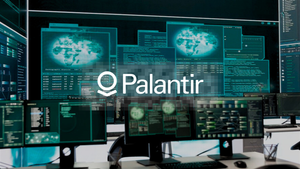
November 12, 2025 – In a pivotal assertion resonating across the decentralized landscape, Sam Barberie, Head of Strategy and Partnerships at Sequence (Horizon Blockchain Games), has declared that "Abstraction Layer Is the Future of Web3 UX." This statement underscores a growing consensus within the industry that simplifying the user experience (UX) is not merely an enhancement but the fundamental key to unlocking mainstream Web3 adoption. Barberie's vision centers on the power of abstraction layers to seamlessly bridge the gap between complex blockchain mechanics and the intuitive, frictionless digital interactions users expect from Web2 applications.
The immediate market reaction to such strategic insights, while not manifesting in volatile price movements of specific tokens, signals a profound shift in investor and developer focus towards foundational infrastructure. The crypto ecosystem is increasingly recognizing that the promise of decentralization can only be realized if it is accessible. Barberie's emphasis on abstraction layers—technological mechanisms that obscure the underlying complexities of blockchain transactions, such as managing private keys, understanding gas fees, and navigating multiple networks—highlights a critical inflection point. This strategic direction is crucial for an industry grappling with the challenge of onboarding the next billion users, moving beyond early adopters to a truly global audience.
Market Impact and Price Action
The pronouncement regarding abstraction layers' pivotal role, while not directly triggering immediate price action in individual tokens, profoundly impacts long-term market sentiment and investment trends. As of late 2025, the market is demonstrating a clear pivot from speculative token investments towards foundational Web3 infrastructure and utility-driven projects. Venture capital (VC) firms are increasingly channeling significant capital into solutions that promise to enhance user experience, recognizing that mass adoption hinges on simplicity and accessibility.
Anticipated long-term market impacts include a significant acceleration in the mass adoption of decentralized technologies. By making Web3 interactions as intuitive as Web2, abstraction layers are expected to drive surges in transaction volumes across various decentralized applications (dApps). The ability to offer gasless transactions, where dApps or third parties cover transaction fees, or where users can pay in stablecoins, removes a major barrier to entry, potentially leading to increased demand for such services and the underlying protocols enabling them.
Investment trends in late 2025 show VCs prioritizing infrastructure, with Web3 startups raising substantial funding rounds. This capital is increasingly concentrated in projects with robust fundamentals, scalability, and strong user retention capabilities. Specifically, there's a heightened focus on "consumer infrastructure" that combines technical depth with superior UX. This includes substantial backing for projects developing smart wallets, account abstraction solutions (like those leveraging ERC-4337), and interoperability protocols designed to create seamless cross-chain experiences. Non-custodial Web3 wallet adoption is projected to climb significantly, indicating growing institutional and retail confidence in user-friendly solutions.
The market analysis for late 2025 underscores a strong growth trajectory for user-friendly Web3 infrastructure. Account abstraction (AA) is widely considered a "game-changer," with ERC-4337 native smart accounts witnessing a seven-fold increase in deployments in 2024. The prevalence of Paymasters sponsoring transactions (approximately 87% of User Operations in 2024) demonstrates the market's embrace of gasless experiences. Furthermore, the modularization of Ethereum, with thousands of scaling solutions expected by year-end 2025, directly supports a more responsive and user-friendly infrastructure, attracting further investment and fostering a maturing, utility-driven market.
Community and Ecosystem Response
The Web3 community, developers, and crypto influencers have responded with overwhelmingly positive sentiment regarding the importance and implementation of abstraction layers, particularly Account Abstraction (ERC-4337) and gasless transactions, as of late 2025. These innovations are widely hailed as indispensable for bridging the chasm between complex blockchain technology and the seamless user experience required for mainstream adoption.
Discussions across crypto Twitter and Reddit frequently position abstraction layers as a "UX revolution" and a "game-changer." The promise of eliminating seed phrase anxiety, simplifying wallet management through social recovery, and facilitating gasless transactions resonates deeply with both seasoned Web3 users and those looking to onboard new participants. Influencers are actively promoting these advancements, recognizing their potential to transform Web3 from a niche technology into a ubiquitous part of the digital landscape. While some acknowledge initial overhyping of ERC-4337's short-term impact, there's a strong consensus that it has successfully established a foundation for mass adoption, with Layer 2 scaling solutions mitigating concerns about gas overhead.
Developer adoption of abstraction layers is accelerating rapidly. Smart account usage saw substantial growth in 2024, with ERC-4337 native smart accounts experiencing a significant surge in deployments. Leading Web3 wallets like Trust Wallet and Binance Web3 Wallet are actively integrating AA features, including gas fee abstraction, one-click transactions, and biometric-protected Passkeys. Coinbase Wallet (NASDAQ: COIN) is also incorporating AA tools and MPC-based recovery. The ecosystem is witnessing a proliferation of frameworks and SDKs designed to simplify ERC-4337 implementation, making advanced wallet functionalities more accessible to projects. Furthermore, there's a strong trend towards deeper AA adoption on Ethereum's Layer-2 solutions (e.g., StarkNet, zkSync, Arbitrum) to enhance efficiency and reduce costs.
Notable discussions within the community revolve around the standardization of abstraction solutions, with developers weighing the merits of ERC-4337, native chain-specific implementations, and EIP-7702 (expected in Ethereum's Pectra upgrade). EIP-7702, which allows existing Externally Owned Accounts (EOAs) to temporarily act as smart contract accounts, is seen as a significant catalyst for driving user demand for gas abstraction. While the underlying infrastructure for developers can be complex, the community largely agrees that the benefits of abstracting this complexity away from the end-user far outweigh the challenges. The concept of "Chain Abstraction," aiming for a unified interface across multiple blockchains, is also gaining traction as a critical solution to ecosystem fragmentation.
What's Next for Crypto
The increasing adoption of abstraction layers is set to trigger a fundamental transformation in the crypto market and the broader Web3 ecosystem, with both short-term and long-term implications extending far beyond late 2025. This shift promises to redefine user interaction, foster unprecedented growth, and catalyze strategic considerations for all stakeholders.
In the short term (by late 2025), abstraction layers are poised to be the primary driver for mass user onboarding. The elimination of complexities like seed phrases and gas fees, coupled with streamlined wallet management, will usher in a new wave of Web3 participants. This influx is expected to fuel a significant surge in on-chain transaction volumes. Enhanced security features offered by smart wallets, such as multi-signature approvals and social recovery, will become standard, greatly improving asset protection. The flexibility to pay gas fees with any token or have them sponsored by applications will also become widespread, potentially influencing demand dynamics for native blockchain tokens versus stablecoins. Projects that strategically integrate these user-centric features early on will likely gain a substantial competitive advantage.
Looking beyond 2025, the long-term vision is for Web3 to become "invisible." Users will benefit from decentralization and self-custody without needing to comprehend the intricate blockchain mechanics. This will lead to truly "chainless" experiences, where the underlying network is entirely abstracted away. This evolution will further blur the lines between traditional finance (TradFi) and decentralized finance (DeFi), as enhanced security, user-friendliness, and compliance capabilities attract greater institutional participation. New business models, including subscription-based DeFi services and automated asset management, will emerge from the programmability of smart wallets. While the risk of ecosystem fragmentation from disparate abstraction solutions exists, ongoing efforts towards modularity and shared standards are crucial to ensure true interoperability and prevent the creation of new "walled gardens."
Key catalysts for this accelerated adoption include upcoming Ethereum upgrades like the Pectra upgrade and EIP-7702, which will facilitate EOA interoperability with smart contract features. The inherent demand for better UX, coupled with the scalability provided by Layer 2 solutions (e.g., zkSync, Starknet), will further fuel the integration of account abstraction. Competition among major Layer-1 blockchains and centralized exchanges (e.g., Coinbase (NASDAQ: COIN)) to offer superior smart wallet features will also drive innovation. For projects, strategic considerations must center on user-centric design, embracing modularity and interoperability, and building robust security into their abstraction layers. Investors should focus on foundational AA infrastructure, Layer 2 solutions, and projects demonstrating a clear commitment to superior user experience.
Possible scenarios for Web3's future include smart wallets becoming the default for digital asset management by late 2025, with a significant portion of on-chain transactions occurring in a chain-abstracted manner. Beyond this, a "super-app" ecosystem may emerge, seamlessly integrating various DeFi services and dApps into unified interfaces. Ultimately, the long-term trajectory points towards ubiquitous programmable finance and deep institutional integration, where decentralized technologies are seamlessly woven into the fabric of global finance and digital life.
Bottom Line
Sam Barberie's assertion that abstraction layers are the future of Web3 UX is more than a prediction; it's a strategic roadmap for the entire crypto ecosystem. The journey from complex, technical interactions to seamless, intuitive experiences is not just an aspiration but an imperative for achieving mainstream adoption. As of late 2025, the evidence is clear: the market, developers, and the broader community are converging on the understanding that user experience is the ultimate gateway to Web3's potential.
The long-term significance of this shift cannot be overstated. Abstraction layers, encompassing innovations like account abstraction (ERC-4337), gasless transactions, and chain abstraction, are dismantling the barriers that have historically kept Web3 in its niche. By empowering users with familiar security features (like social recovery), enabling flexible gas payments, and creating a unified multi-chain experience, these technologies are setting the stage for Web3 to become as ubiquitous and invisible as the internet itself. The focus on user-centric design will attract billions of new users, unlock novel business models, and facilitate deeper institutional integration, ultimately leading to a more inclusive and efficient global digital economy.
For crypto investors and enthusiasts, the key takeaway is to recognize the profound value proposition of projects prioritizing and implementing robust abstraction layer solutions. Monitoring the growth of active smart contract wallets, the Total Value Locked (TVL) in protocols leveraging AA, and the number of dApps integrating Paymaster services will be crucial metrics. The ongoing development and adoption of Ethereum upgrades like EIP-7702, alongside the proliferation of scalable Layer 2 solutions, will serve as important catalysts to watch. Ultimately, the future of crypto adoption hinges on its ability to transcend technical jargon and deliver undeniable, user-friendly utility. The abstraction layer is the critical bridge to that future.
This article is for informational purposes only and does not constitute financial or investment advice. Cryptocurrency investments carry significant risk.





